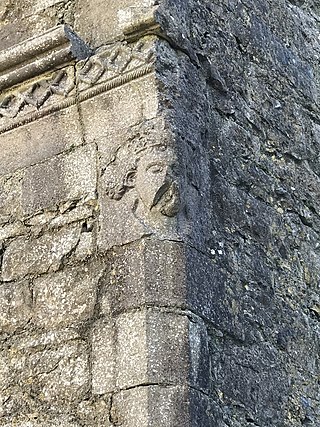
Ruaidrí mac Tairrdelbach Ua Conchobair was King of Connacht from 1156 to 1186, and High King of Ireland from 1166 to 1198. He was the last High King of Ireland before the Anglo-Norman invasion.

West Connacht was a kingdom of Gaelic Ireland, associated geographically with present-day County Galway, particularly the area known more commonly today as Connemara. The kingdom represented the core homeland of the Connachta's Uí Briúin Seóla kindred and although they ruled, there were smaller groups of other Gaels in the area, such as the Delbhna Tir Dha Locha and the Conmhaícne Mara. It existed from 1051 onwards, after the Ó Conchobhair, Kings of Connacht, pushed the Ó Flaithbheartaigh to the West of Lough Corrib, from their original territory of Maigh Seóla. Iar Connacht remained a subordinate túath of Connacht, until the 13th century, after which it was more independent.
Conchobar Maenmaige Ua Conchobair, son of High King of Ireland Ruaidrí Ua Conchobair, was King of Connacht from 1183 to 1189. He was a military commander and opponent of the Norman invasion of Ireland.

Cathal Crobhdearg Ua Conchobair (1153–1224), was a king of Connacht. He was the youngest son of the High King of Ireland Tairrdelbach Ua Conchobair and brother to the last fully recognized High King Ruadri Ua Conchobair. His own sons Aedh Ua Conchobair and Feidhlimidh Ua Conchobair were kings of Connacht after him.
Toirdhealbhach Mór Ua Conchobhair anglicised Turlough Mór O'Conor, was King of Connacht (1106–1156) and High King of Ireland.
Conchobar mac Tadg, King of Connacht 967–973 and eponym of the O'Conor family of Connacht.
The Kings of Magh Luirg or Moylurg were a branch of the Síol Muireadaigh, and a kindred family to the Ua Conchobair Kings of Connacht. Their ancestor, Maelruanaidh Mor mac Tadg, was a brother to Conchobar mac Tadg, King of Connacht 967–973, ancestor of the O Connor family of Connacht. Maelruanaidh Mor mac Tadg is said to have made a deal of some nature where, in return for abandoning any claim to the provincial kingship, he would be given Moylurg. His dynasty was known as the Clan Mulrooney, and later still took the surname of MacDermot. The following is a list of their Kings, followed by the respective heads of the family up to the early modern period.
Brian Luighneach Ua Conchobhair was a prince of Connacht.

The O'Conordynasty are an Irish noble dynasty and formerly one of the most influential and distinguished royal dynasties in Ireland. The O'Conor family held the throne of the Kingdom of Connacht up until 1475. Having ruled it on and off since 967, they ruled continuously from 1102 to 1475. Moreover, the O'Conor parent house the Uí Briúin and Síol Muireadaigh ruled Connacht on many occasions – but not continuously – between 482 and 956. The house of O'Conor also produced two High Kings of Ireland, Tairrdelbach Ua Conchobair and his son Ruaidrí Ua Conchobair, the last High King of Ireland. The family seat is Clonalis House outside Castlerea in County Roscommon.
Events from the year 1202 in Ireland.
Ruaidrí Ua Conchobair, called Ruaidrí na Saide Buide was King of Connacht, perhaps twice.
Áed Ua Conchobair or Áed in Gai Bernaig was the King of Connacht, and reigned from 1046 to 1067. He was the son of Tadg in Eich Gil.
Conchobar Ua Conchobair, served as tánaiste of Connacht, fl. 1126–1144.
Tommaltach Ua Conchobair, bishop of Elphin and archbishop of Armagh, lived from c. 1150–1201.
Donnell Mor Mideach Ua Conchobair, Prince of Connacht, fl. 1144 to 1176.
Mór Ní Briain was Queen of Connacht, and died 1218. She was a daughter of King Domnall Mór Ua Briain of Thomond. Domnall's wife was Órlaith Ní Murchadha, Princess of Leinster, daughter of Queen Mor Ui Thuathail and King Diarmaid Mac Murchadha of Leinster.
Mathghamhain mac Conchobar Maenmaige Ua Conchobair was Prince of Connacht.
Muirchertach Tethbhach Ua Conchobair was Prince of Connacht.
Conchobar ua nDiarmata, Noble of Connacht and foster-son to Ruaidrí Ua Conchobair, died 1189.
Cathal O'Conor was king of Connacht from 1280 to 1288.



